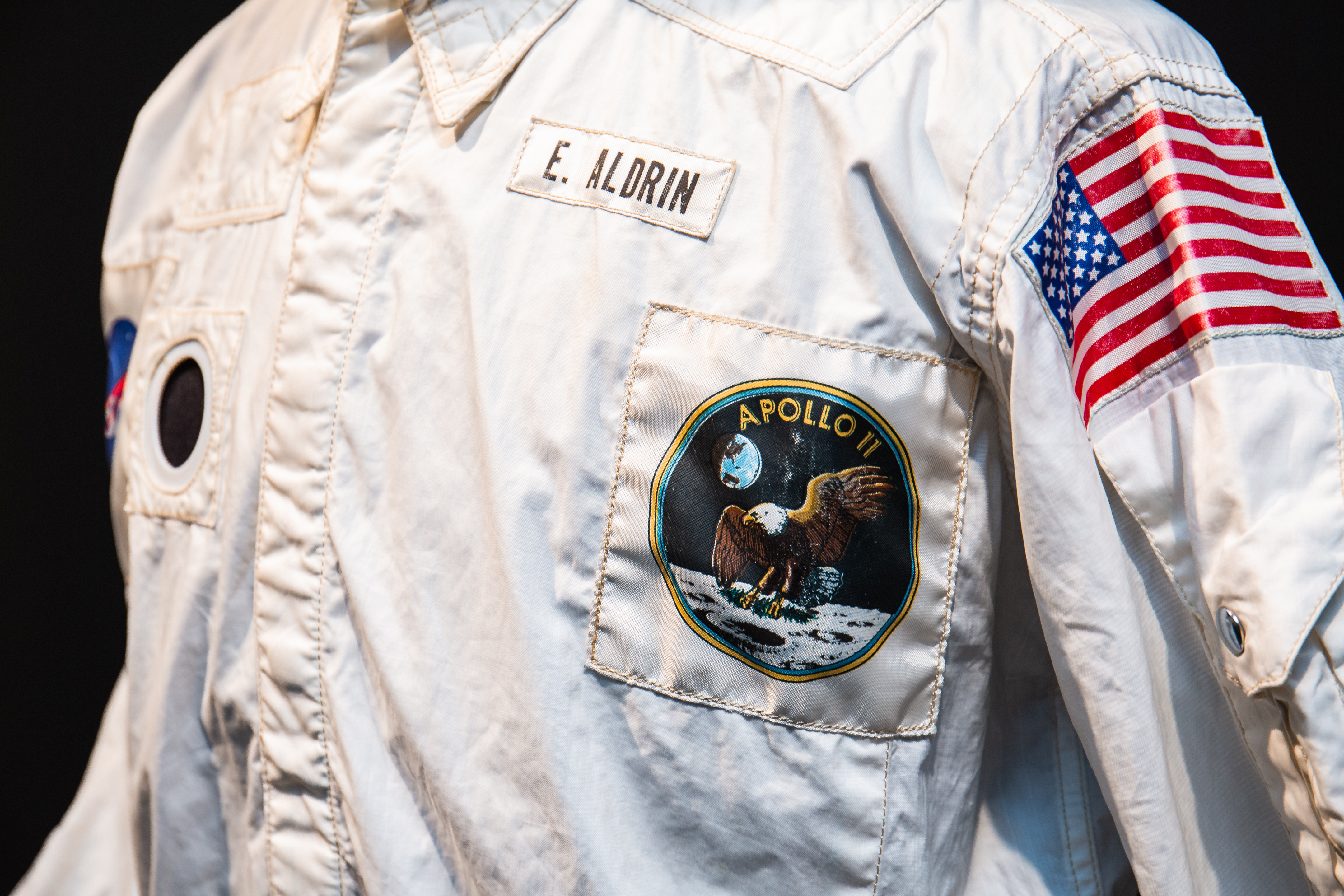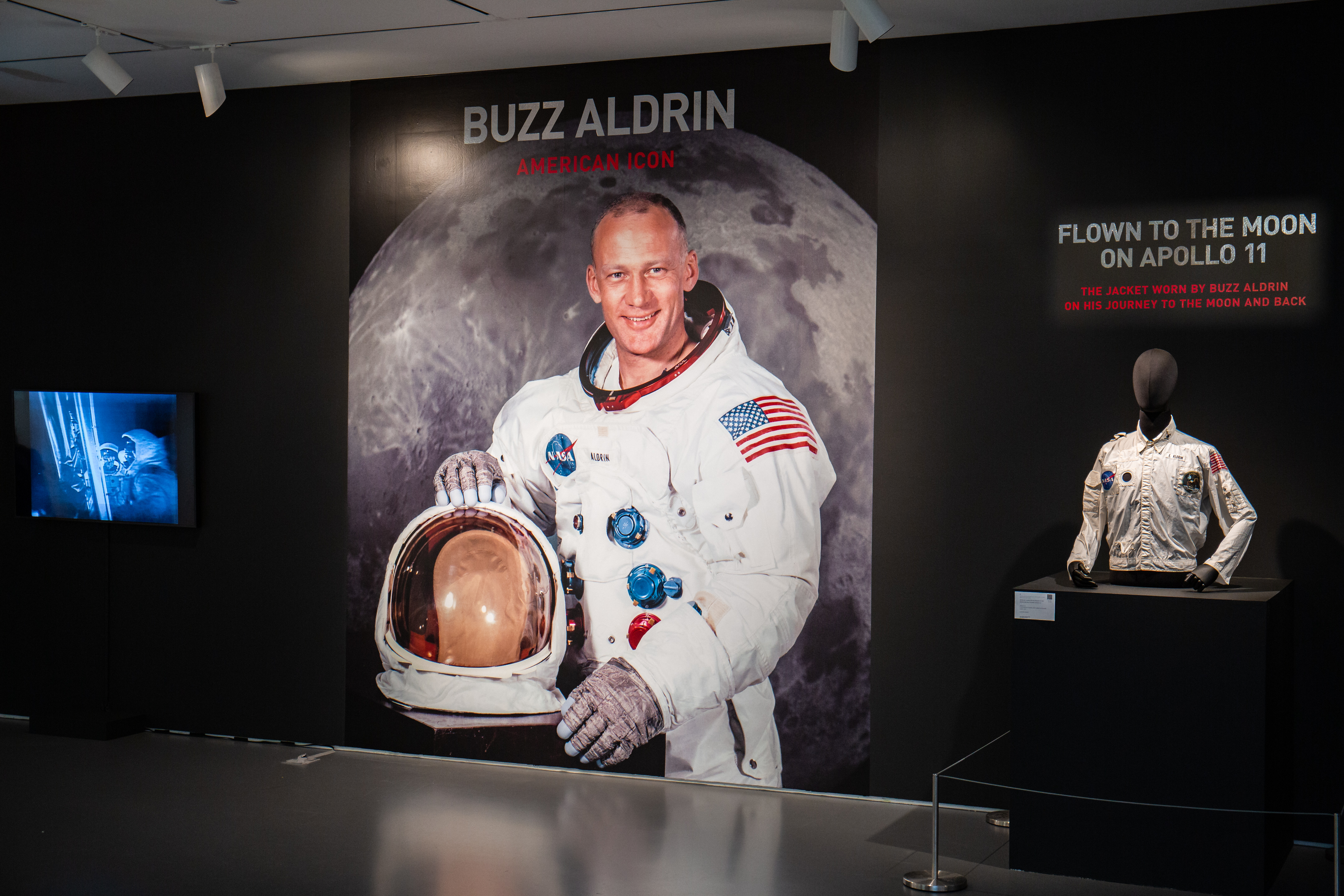
NEW YORK – On July 25 at Sotheby’s, Buzz Aldrin’s Apollo 11 inflight coverall jacket, worn during the historic 1969 mission to the moon and back, achieved $2,772,500 – making it the most valuable American space-flown artifact ever sold at auction, and the most valuable jacket sold at auction. The exceptionally rare garment was chased by multiple bidders for almost 10 minutes before selling to a bidder on the phone.
The sale of the jacket marks the only flown garment from the Apollo 11 mission available for private ownership. The practical elements of the jacket can be seen clearly, including reinforced holes in the upper torso through which the medical connections could pass. Buzz’s name “E. Aldrin” is also clearly printed above the Apollo 11 mission emblem with a flag of the United States emblazoned on the left shoulder; on the right lapel is the famous NASA logo known as the “meatball.”

Until the tragic Apollo 1 fire in 1967, spacesuits and inflight gear were crafted from highly flammable materials, such as nylon. The fire triggered a review of the suit and inflight garments’ design, which resulted in modifications including the development of a new, fire-proof material known as Beta Cloth, a novel technology which was both fire-resistant and tough enough to help protect the astronauts from micrometeroid blasts while outside the spacecraft.

